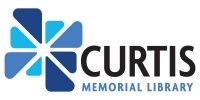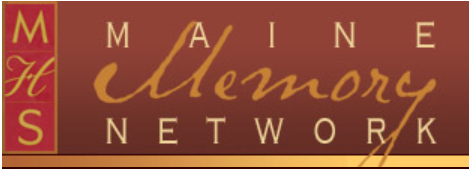Recent Genealogy Posts:
Genealogy help this spring and summer
Our fantastic genealogy volunteer Lynne will contine to offer assistance here at the Library on the following Sundays, from 12:30 – 3:30:
March 24, April 7, April 21, and April 28.
May – August she will not be able to be here at the library. However, if you have a genealogy question during that time, we would be happy to forward it on to Lynne. Please send your question to helpdesk@curtislibrary.com and we will pass it along!
Help us spend some genealogy funds!
Curtis Library recently received a gift specifically to support the community’s genealogists. Before spending those funds we would like your suggestions about resources you would like to see the Library obtain- books, magazines, genealogy databases?
Please email your suggestions to Library Director Liz Doucett at edoucett@curtislibrary.com
We will let you know what new resources will be heading this way.
Thank you!
Free DNA Research Help Now Available
Would you like assistance researching your family tree, interpreting DNA results, finding a long lost relative, or uploading your DNA to public sites that allow police access for solving cold cases and identifying the deceased? If circumstances have prevented you from knowing much about your family history, DNA testing is a great way to break down those brick walls. To arrange an appointment, please send an email to genealogyhelp@curtislibrary.com and our volunteer will schedule an appointment to meet with you here at the library. *Please note that this free service is provided by a volunteer and not Curtis Library staff. No personally identifiable information about you or your research will be collected by the Library.
I did it!
Well, I did it! My last blog provided information about what to keep and what to throw away when you are trying to clean out family papers and photographs. Immediately after writing that blog I took a week’s “staycation” at home. The weather wasn’t great (a potential hazard of summers in Maine) so I decided to jump full-throttle into Project “Clean-Out-the-Family-Stuff”.
Here’s how I worked:
- I took one pile or one box or one bag of photos or old news clippings or old papers and emptied it out on to the sofa next to me. I never looked at anything other than the pile next to me because if I did I would have immediately been overwhelmed and come to a screeching halt!
- I sorted completely through that pile.
- Anything that I didn’t think should be saved immediately went into a garbage bag or a shredding bag. If I didn’t know the name of a person in a photo was, the photo was thrown out or put in a pile for family members to research. I trusted myself to make the correct decision about keep or throw. If I made a mistake I decided ahead of time it was ok because if the photo or clipping stayed where it was no one would ever have seen it anyway. That was a very freeing way of approaching the project.
- I sorted all items that I was keeping into piles (based on subject) and labeled each pile.
- I was remorseless with photographs. I asked both my sister and brother if they wanted photos of their kids. They both said no because they had copies of everything. So, unless I wanted a specific photo of a nephew or niece, into the shredding pile it went.
- Once I finished putting like items in a pile, I put the pile into a file folder with its subject name on it. The folder then went into a box. This kept my room from getting too crowded with stuff.
- Once I finished a pile I started immediately on the next pile. I worked three hours on each bad weather day and finished in a week – amazing. This is a project that I’ve avoided for ages.

The next step will involve going through the labeled folders and making sure the labels are right and make sense so other family members can find what they want if they go through the files. I will also make sure I write on the back of any photo (in pencil) the name of the people in the photo if that hasn’t already been done.
Some folders will get made into albums, some will get digitized, and some will stay in folders in boxes. But, they will be labeled and identified for the next generation and they can decide if they want to keep them or not. I will feel like I’ve done the best job I can passing on the family stuff to the next generation in a way that will actually let them use that “stuff”. Good luck with your sorting efforts and I will tell you that it feels REALLY good to have done this!
Below are links to some genealogy resources – please note that HeritageQuest requires a Portland Public Library (PPL) card. For information on getting a PPL card (all Cumberland County residents are eligible), click here. Curtis Library has a card and can use it to get you access when you are in the library. Access to American Ancestors is through Curtis Library’s subscription and can only be used from inside the library.








